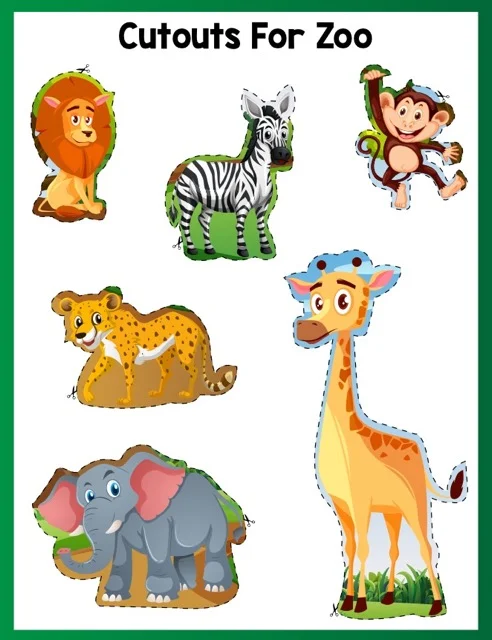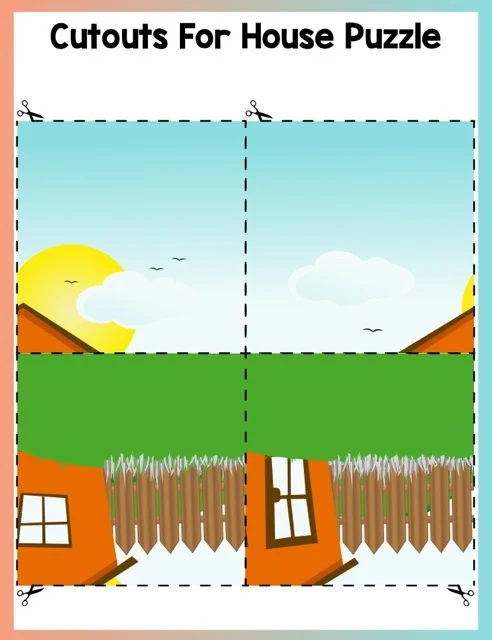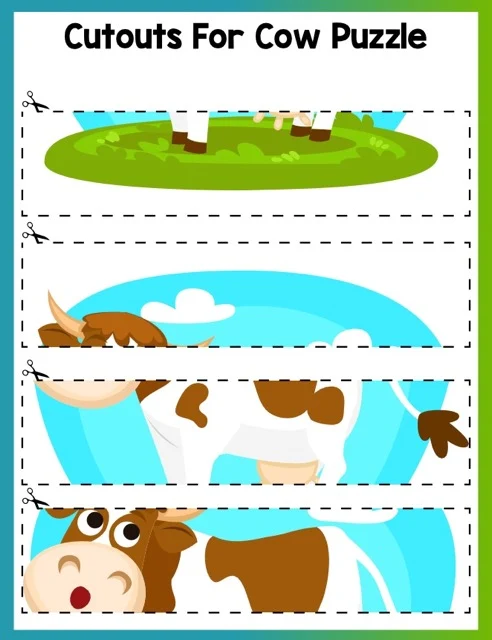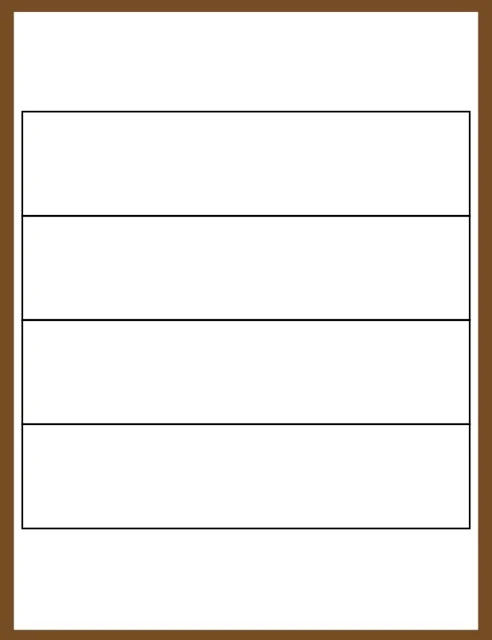Cut-and-Paste Activities in Early Childhood Education
This briefing document examines the educational value of cut-and-paste activities for preschool and kindergarten children. Three sources highlight the activities' benefits in developing fine motor skills, creativity, and cognitive abilities. The document details practical implementation, emphasizing the use of accessible materials and adaptable thematic variations, such as farm, ocean, or space themes, to enhance engagement and learning. The activities are shown to be suitable for both individual and group settings within a classroom context, contributing to broader early childhood educational goals.
Cut & Paste Activities for Young Children
Briefing Doc: Cut & Paste Activities for Young Children
Overview: This briefing doc analyzes three sources focusing on cut & paste activities for young children, exploring their educational benefits, implementation, and thematic variations.
Main Themes & Ideas:
●
Developmental Benefits: Cut & paste activities are recognized for their significant contribution to a child's development, going beyond just fine motor skills. They promote:
○
Fine Motor Skill Development: "Cutting and pasting help children refine their hand-eye coordination and finger dexterity." (Source 1)
○
Creativity and Imagination: Children can "create their own scenes by drawing or painting backgrounds" and "use the cutouts to tell stories or create imaginative scenarios." (Source 1)
○
Theme Exploration: Exposure to various themes like "Farm," "Garden," "Ocean," "Space," and others allows children to learn about diverse environments and concepts. (Sources 1, 2, 3)
○
Cognitive Skill Development: "Matching images to backgrounds helps children develop their observation skills and problem-solving abilities." (Source 1)
●
Implementation:
○
Materials: The core materials needed are simple and easily accessible: "Printed copies of the activity sheets," "Scissors," and "Glue or tape." (Source 1)
○
Procedure: The process involves cutting images, identifying the matching background, and pasting them appropriately. (Source 1)
○
Variations: The activity is versatile and can be adapted in numerous ways: creating original backgrounds, storytelling with cutouts, matching games, and more. (Source 1)
●
Thematic Significance: Themes play a crucial role in enhancing engagement and learning:
○
Engaging Content: Source 3 visually demonstrates a range of themes like "Ocean," "Farm," "Teacher," and "Australia" with appealing imagery.
○
Contextual Learning: Themes provide context for the images, making the activity more meaningful and aiding in knowledge retention.
Important Facts:
●
Target Age Group: Cut & paste activities are primarily beneficial for preschoolers and kindergarteners. (Source 1)
●
Classroom Application: These activities are highly suitable for both individual and group work within a classroom setting, potentially as part of a larger thematic unit. (Sources 1, 2)
●
Educational Goals: Cut & paste activities effectively support early childhood education goals by fostering a holistic learning experience combining physical dexterity, cognitive development, and creative expression. (Sources 1, 2)
Quotes:
●
"This activity is suitable for young children, particularly preschoolers and kindergarteners. It helps them develop fine motor skills, hand-eye coordination, and creativity." (Source 1)
●
"Themed activities expose children to different environments and concepts, broadening their understanding of the world." (Source 2)
Conclusion: Cut & paste activities are a valuable tool for early childhood education. Their accessibility, adaptability, and multi-faceted benefits make them an ideal choice for engaging young learners and fostering their overall development. The use of diverse themes further amplifies the educational value of these activities, sparking curiosity and enriching learning experiences.
Cut & Paste: Thematic Activities for Young Children
Cut and Paste Activity FAQ
What is this activity about?
This activity involves cutting out images of various objects and pasting them onto corresponding background scenes. For instance, you might cut out a picture of a cow and paste it onto a farm scene.
What are the different themes available?
The activity features a variety of themes to choose from, including:
●
Farm: Animals like cows, pigs, and chickens can be placed on a farm background.
●
Garden: Flowers, vegetables, and gardening tools can be arranged in a garden setting.
●
Desert: Camels, cacti, and pyramids are some elements you can use for a desert scene.
●
Ocean: Dolphins, sharks, and starfish can populate an underwater scene.
●
Teacher: School supplies, books, and a teacher figure can be used for a classroom setting.
●
Space: Rockets, planets, and astronauts can be placed in a space background.
●
Australia: Koalas, kangaroos, and the Sydney Opera House are some iconic Australian elements.
●
Antarctica: Penguins, seals, and icebergs can be used to create a polar scene.
What age group is this activity suitable for?
This activity is suitable for young children, particularly preschoolers and kindergarteners. It helps them develop fine motor skills, hand-eye coordination, and creativity.
What materials do I need?
You will need:
●
Printed copies of the activity sheets
●
Scissors
●
Glue or tape
How do I do the activity?
1.
Cut out the images along the dotted lines.
2.
Identify the correct background scene for each image.
3.
Apply glue or tape to the back of the image.
4.
Carefully paste the image onto the corresponding background scene.
Are there any variations I can try?
Yes! You can encourage children to:
●
Create their own scenes by drawing or painting backgrounds.
●
Use the cutouts to tell stories or create imaginative scenarios.
●
Turn the activity into a matching game by cutting out multiple copies of the images and having children match them to the correct backgrounds.
What are the benefits of this activity?
This activity offers several benefits for children, including:
●
Fine Motor Skill Development: Cutting and pasting help children refine their hand-eye coordination and finger dexterity.
●
Creativity and Imagination: Arranging the cutouts on the scenes encourages children to think creatively and express themselves.
●
Theme Exploration: The various themes expose children to different environments and concepts.
●
Cognitive Skills: Matching images to backgrounds helps children develop their observation skills and problem-solving abilities.
Can I use this activity in a classroom setting?
Absolutely! This activity is a great addition to any preschool or kindergarten classroom. It can be used for individual work, small group activities, or as part of a thematic unit.
Cut and Paste Activities: A Study Guide
Cut & Paste Activities Study Guide
Short-Answer Quiz
1.
What is the primary purpose of cut and paste activities for young children?
2.
List three themes commonly featured in cut and paste activities.
3.
Besides scissors and glue, what else is required for a cut and paste activity?
4.
Describe two variations that can be incorporated into cut and paste activities.
5.
How do cut and paste activities contribute to a child's fine motor skill development?
6.
Explain how these activities foster creativity and imagination.
7.
In what ways do cut and paste activities promote cognitive skill development?
8.
Can cut and paste activities be used in a classroom setting? Why or why not?
9.
What is the benefit of themed cut and paste activities for young children?
10.
Using the provided examples, identify three specific images a child could cut out for an "Ocean" themed activity.
Short-Answer Quiz Answer Key
1.
Cut and paste activities primarily aim to develop fine motor skills, hand-eye coordination, and creativity in young children.
2.
Three common themes are "Farm," "Garden," and "Ocean." (Other valid themes from the source material are acceptable.)
3.
You also need printed copies of the activity sheets.
4.
Children can create their own backgrounds or use the cutouts for storytelling and imaginative play. (Other variations mentioned in the source are also acceptable.)
5.
The actions of cutting and pasting refine hand-eye coordination and finger dexterity.
6.
Arranging cutouts on scenes allows children to express themselves visually and explore different arrangements.
7.
Matching images to backgrounds enhances observation skills and problem-solving abilities.
8.
Yes, they are suitable for individual or group work and can be integrated into thematic units.
9.
Themed activities expose children to different environments and concepts, broadening their understanding of the world.
10.
A child could cut out images of dolphins, sharks, and starfish. (Other valid images from the "Ocean" theme example are acceptable.)
Essay Questions
1.
Discuss the developmental benefits of cut and paste activities beyond fine motor skills. How do these activities contribute to a child's overall development?
2.
Analyze the role of themes in cut and paste activities. How do themes enhance learning and engagement for young children? Provide specific examples.
3.
Compare and contrast the use of cut and paste activities in a home versus a classroom setting. What are the advantages and limitations of each environment?
4.
Evaluate the effectiveness of cut and paste activities as a teaching tool. In what ways do they support early childhood education goals?
5.
Imagine you are designing a new set of cut and paste activities for a specific age group. Describe your chosen theme, the types of images you would include, and the learning objectives you aim to achieve.
Glossary of Key Terms
●
Fine Motor Skills: Small muscle movements involving hands and fingers, crucial for tasks like writing, drawing, and buttoning clothes.
●
Hand-Eye Coordination: The ability to synchronize hand movements with visual input, essential for activities like catching a ball or using scissors.
●
Creativity: The capacity to generate original ideas and express oneself in unique ways.
●
Theme: A central idea or topic that connects different elements in an activity.
●
Cognitive Skills: Mental processes involved in thinking, learning, remembering, and problem-solving.
●
Preschoolers: Children between the ages of 3 and 5 years old.
●
Kindergarteners: Children attending kindergarten, typically between the ages of 5 and 6 years old.
●
Thematic Unit: A series of lessons or activities organized around a central theme, providing a cohesive learning experience.























